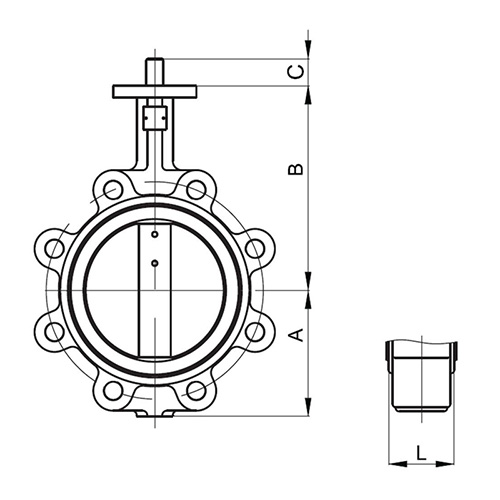វិច្ឆិកា . 18, 2024 12:18 Back to list
Flange Disassembly Techniques for Pipe Joint Maintenance and Repair
Flange Dismantling Joint A Comprehensive Overview
A flange dismantling joint, also known as a flange disassembly joint, is a critical component used in piping systems worldwide. These joints are designed to facilitate easy assembly and disassembly of pipes, valves, and other equipment in a piping network, making maintenance and repairs more efficient. In this article, we will delve into the purpose, types, advantages, and applications of flange dismantling joints.
Purpose of Flange Dismantling Joints
The primary purpose of flange dismantling joints is to provide a flexible connection that can be easily removed when necessary. In industry, systems require routine maintenance, upgrades, and replacements. A flange dismantling joint simplifies the process of disconnecting sections of piping without the need for cutting or extensive modifications. This ease of disassembly is essential in environments where frequent maintenance is necessary, helping to reduce downtime and operational costs.
Types of Flange Dismantling Joints
There are several types of flange dismantling joints, each tailored to different applications and system requirements. The most common types include
1. Standard Flange Dismantling Joints These joints consist of a bellows connection that can accommodate the axial movement of pipes. Standard models provide a simple way to connect flanged pipes and are commonly used in water and wastewater treatment plants.
2. Expanding Type Flange Dismantling Joints Designed with adjustable lengths, this joint type allows for the extension and reduction of pipe lengths. It is ideal for situations where separation distance between connected pipes may vary, providing added flexibility.
3. Flexible and Rigid Dismantling Joints While flexible joints can accommodate some degree of misalignment and thermal expansion, rigid dismantling joints are used in situations requiring strict alignment. Each type serves a unique purpose depending on the system’s requirements.
4. Custom Dismantling Joints Some applications require specialized solutions. Custom joints can be engineered to meet specific requirements, including unique sizes, materials, and performance characteristics.
Advantages of Flange Dismantling Joints
Flange dismantling joints offer several advantages, making them a preferred choice in various industries
flange dismantling joint

- Ease of Maintenance One of the primary advantages is the ease with which they can be installed and removed. Technicians can quickly detach sections for inspection, cleaning, or replacement without significant disruption.
- Cost-Effective Solution By minimizing downtime and reducing the need for extensive labor during maintenance, flange dismantling joints can lead to significant cost savings for operations.
- Flexibility The various types of dismantling joints provide flexibility in installation and maintenance, accommodating system changes and expansions without the need for complete system overhauls.
- Durability Made from robust materials such as stainless steel, these joints are designed to withstand harsh operating conditions, including high pressures and corrosive environments.
Applications of Flange Dismantling Joints
Flange dismantling joints are utilized across various sectors, including
- Water and Wastewater Treatment They are commonly employed in treatment plants where regular maintenance of pipelines and valves is essential.
- Industrial Processes The manufacturing and chemical industries use flange dismantling joints to ensure easy access to different components of their extensive piping systems.
- HVAC Systems In heating, ventilation, and air conditioning systems, these joints provide efficiencies in maintenance and repair.
- Fire Protection Systems Dismantling joints ensure that fire suppression systems can be easily maintained.
In conclusion, flange dismantling joints play a vital role in modern piping systems, providing a combination of ease of maintenance, flexibility, and cost efficiency. As industries continue to evolve, the importance of such components in facilitating effective management of infrastructure cannot be overstated. Understanding their types and applications helps ensure optimal performance and reliability in various operational contexts.
Share
-
Reliable Wafer Type Butterfly Valves for Every IndustryNewsJul.25,2025
-
Reliable Flow Control Begins with the Right Ball Check ValveNewsJul.25,2025
-
Precision Flow Control Starts with Quality ValvesNewsJul.25,2025
-
Industrial Flow Control ReliabilityNewsJul.25,2025
-
Engineered for Efficiency Gate Valves That Power Industrial PerformanceNewsJul.25,2025
-
Empowering Infrastructure Through Quality ManufacturingNewsJul.25,2025